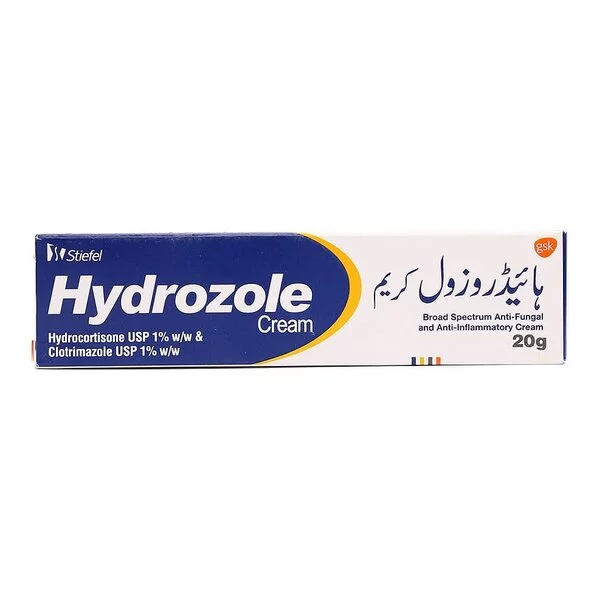Acne Vulgaris is a common skin condition that occurs when skin follicles are clogged with dead skin and cells. Known for making its appearance at the onset of puberty, it can persist through adulthood as well. While persistent acne isn’t usually a medical emergency and is often cleared with home and OTC treatments, stubborn or particularly painful cases may require a stronger solution, hence the following guide to some of the most common prescription acne treatments:
1- Benzoyl Peroxide (BP):
Also available as an OTC treatment at a 5% concentration, benzoyl peroxide is an antimicrobial compound that instantly eliminates 99.9% of the acne-causing P. acnes bacteria under the skin’s surface by exposing it to oxygen. It is available as a cream, wash, and gel.
Cons: Prescription-grade solutions contain 10% or more BP concentration, resulting in stinging, burning, itching, redness, and peeling or flaking skin; while certain individuals may even experience severe allergic reactions (extreme inflammation and crusting), so ask your doctor to start with a mild 2-2.5% BP solution instead. It also has a bleaching effect on both skin and fabric.
2- Azelaic Acid:
Extracted from wheat, rye, and barley, a 15-20% solution of this naturally occurring acid reduces acne by destroying P. acnes, and prevents further breakouts by accelerating skin cell renewal and reducing dead skin accumulation in the pores. It is also an effective treatment for rosacea.
Cons: Mild to moderate tingling, burning, itchiness and stinging sensations. A small number of users have also reported skin lightening effects, although it is yet to be proven.
3- Retinoids:
These vitamin A derivatives not only unclog pores by causing the surrounding skin to stretch and grow via keratinocytes, but also shrink the sebum (oil) producing glands, minimize dead skin cells, and eliminate the causative bacteria. Retinoids are available both orally and in gel form.
Cons: Oral retinoids may affect the liver and central nervous system, causing new skin blemishes by overstimulating skin growth, and birth defects if taken during the first month of pregnancy.
4- Antibiotics:
Often prescribed alongside benzoyl peroxide for severe, inflammatory breakouts, antibiotics in the form of gels, lotions, and tablets/capsules target acne-causing bacteria, with visible results within days. Minocycline and Clindamycin are some of the most common acne-fighting antibiotics.
Cons: While more effective than their topical counterparts, oral antibiotics often cause diarrhea, dizziness, recurring yeast infections, photo-sensitivity, vomiting, and lightheadedness. Specific side-effects include permanent teeth stains aka ‘blue smiles’ and upset stomach for minocycline, and irritation, burning, dryness, oiliness and peeling for erythromycin when used alongside other acne treatments except BP. Therefore, refrain from using oral antibiotics for more than 6 months.
5- Oral Contraceptives:
Acne breakouts related to hormonal imbalance, usually during menstruation or menopause, can be controlled via certain contraceptives containing both progesterone and estrogen to decrease levels of the acne-causing testosterone (male hormones).
Cons: Smokers, or those suffering from migraines or blood-clotting disorders are advised against oral contraceptives, as they increase the risk of heart disease, stroke, and blood clotting. Other side-effects include gallbladder issues, hypertension, and depression.
6- Spironolactone:
Acne breakouts in adult women can also be treated by the long-term use of this blood pressure medication. Taken orally, spironolactone works by greatly reducing sebum production and pore blockage.
Cons: Excess urination, loss of appetite, cramps, pain, bleeding, bruising and weakness.
7- Isotretinoin:
Prescribed only when all other treatments are ineffective, it is a vitamin A derivative that, like Spironolactone, reduces sebum production by drastically shrinking the oil-producing glands, while also accelerating skin renewal.
Cons: Due to the risk of severe birth defects, monthly blood and pregnancy tests are required for women. Gender inclusive side-effects include mouth and facial dryness, nosebleeds, reduced vision, photo-sensitivity, and liver dysfunction.
Patience is key when using prescription acne treatments, as results usually take between 6 weeks-6 months. Also, never pick your own antibiotic without a proper medical opinion from your doctor. You can also book an appointment with a top Dermatologist in Lahore, Karachi and Islamabad through oladoc.com, or call our helpline at 042-3890-0939 for assistance to find the RIGHT Doctor for your acne-related concerns.






